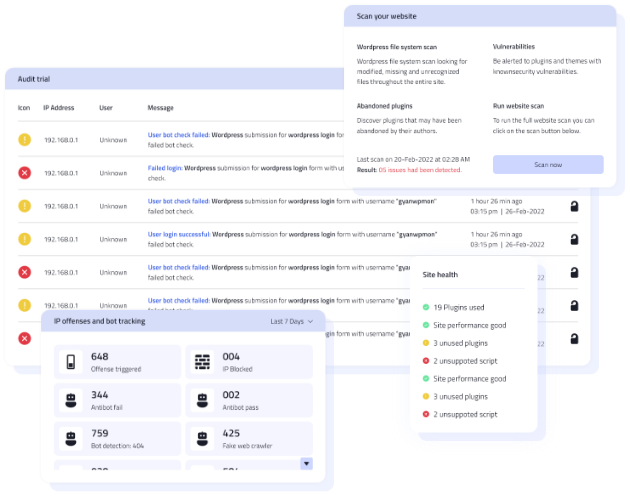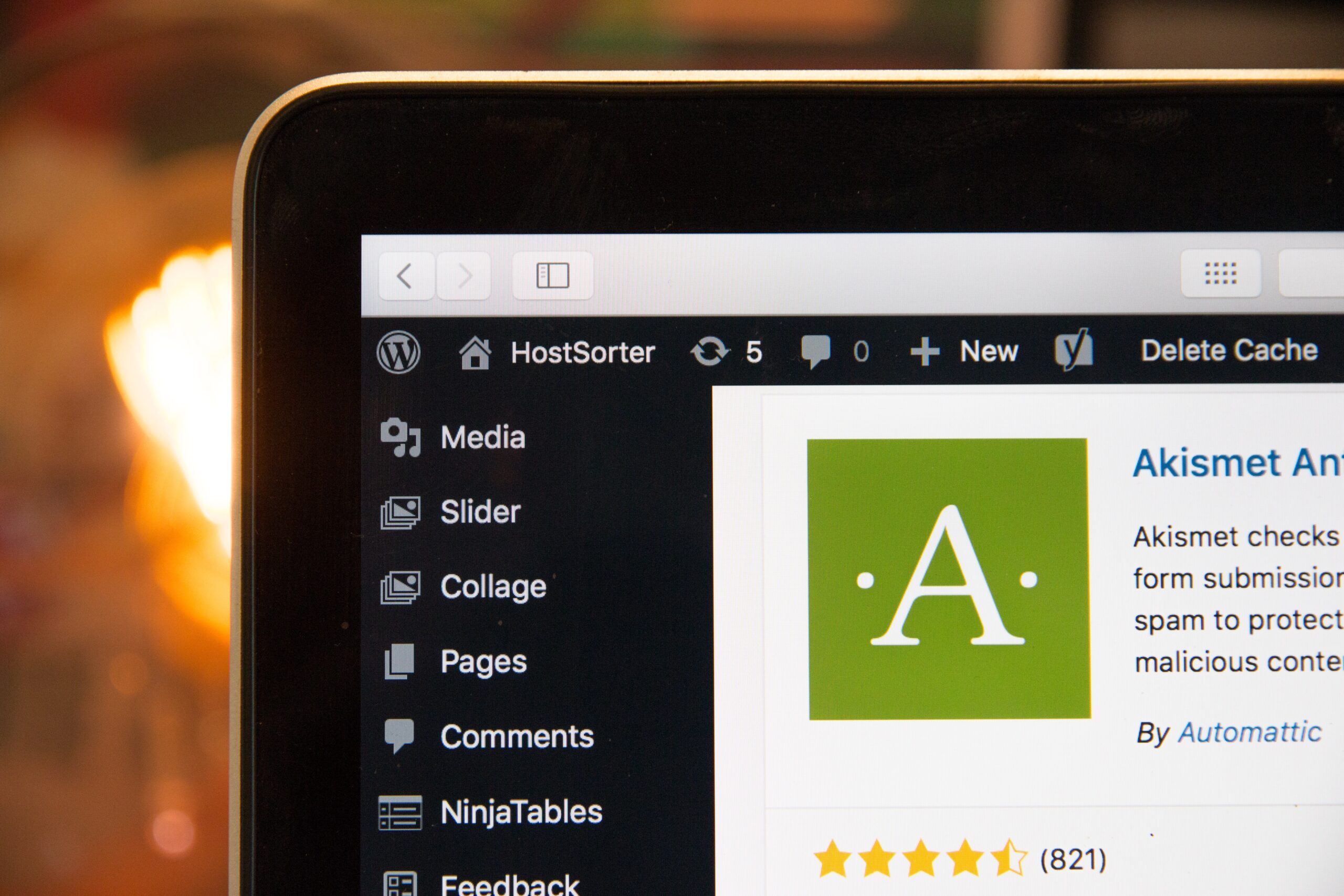If you’re managing multiple WordPress websites, you’re probably familiar with the challenges that can come with it. Between security concerns, content management, plugin updates, and optimizing website performance, managing even a handful of sites can be a daunting task, let alone 50+. In this article, we’ll explore some strategies for efficiently managing and streamlining your WordPress site management process.
The Challenges of Managing Multiple WordPress Websites
Managing one WordPress site can be a daunting task, but managing multiple sites can be overwhelming. As your portfolio of websites grows, so do the challenges you face. Here are some additional details on the most common challenges you might encounter:
Security Concerns
Security should always be a top priority when managing any website, but with each additional WordPress site you manage, the risks multiply. Hackers can exploit vulnerabilities in any one of your sites, potentially compromising all of them. It’s important to stay vigilant and take proactive measures to protect your sites from malware, brute force attacks, and other security threats.
One way to improve security is to implement strong passwords and two-factor authentication on all your sites. You can also use security plugins like Wordfence or iThemes Security to monitor your sites for suspicious activity and potential vulnerabilities.
Plugin and Theme Updates
WordPress plugins and themes are constantly being updated to address security issues, improve functionality, and fix bugs. However, outdated plugins and themes can lead to security vulnerabilities, compatibility issues, and even website downtime. Keeping up with updates on one site can be a challenge, but staying on top of updates on 50+ sites is a whole other ballgame.
One way to simplify updates is to use a centralized management tool like ManageWP or InfiniteWP. These tools allow you to manage multiple WordPress sites from a single dashboard, making it easier to update plugins and themes across all your sites at once.
Content Management and Scheduling
Managing content across multiple sites can be a time-consuming and confusing process, especially if you have to customize content for each site individually. However, having a solid content strategy in place can help streamline the process.
You can use a content calendar to plan and schedule content in advance, making it easier to manage multiple sites at once. You can also use tools like CoSchedule or Hootsuite to manage social media posts and promotions across all your sites.
Performance Optimization
Optimizing website performance is crucial for both user experience and search engine optimization (SEO). However, optimizing performance on 50+ sites can be a daunting task.
One way to improve performance is to use a content delivery network (CDN) to distribute your site’s content across multiple servers, reducing load times and improving site speed. You can also use caching plugins like WP Super Cache or W3 Total Cache to improve site performance.
Managing multiple WordPress sites can be a challenge, but with the right tools and strategies in place, it’s definitely doable. By prioritizing security, staying on top of updates, streamlining content management, and optimizing performance, you can effectively manage and grow your portfolio of websites.
Centralized Management Solutions
Managing multiple WordPress sites can be a challenging task, especially if you have several sites to manage. Fortunately, there are several centralized management solutions available that can help you manage all your sites from a single dashboard. Here are a few options to consider:
WordPress Multisite
If your sites share a similar structure and functionality, WordPress Multisite might be an excellent option for you. WordPress Multisite allows you to manage multiple WordPress sites from a single dashboard, making it easy to update plugins, themes, and the WordPress core. Additionally, you can manage user access and permissions across all your sites from a single location.
WordPress Multisite is particularly useful for large organizations that need to manage several sites with similar functionality. For example, a university might use WordPress Multisite to manage all its departmental websites.
Third-Party Management Tools
While several third-party WordPress management tools are available, allowing you to manage multiple sites from a single dashboard, WP Monitoring stands out as an all-in-one solution that seamlessly integrates with these tools. Popular third-party management tools include ManageWP, InfiniteWP, iControlWP, and others, offering a wide range of features such as automated backups, security monitoring, and performance optimization.
These tools enable easy updates for plugins, themes, and the WordPress core while also allowing you to manage user access and permissions across all your sites from a single location. WP Monitoring complements these tools by offering comprehensive control over WordPress updates, ensuring that your websites remain up-to-date and secure.
In addition to its compatibility with third-party management tools, WP Monitoring sets itself apart as an all-in-one solution that takes care of all aspects of your WordPress site’s security and performance. Furthermore, some of these tools offer white-labeling options, allowing you to brand the management dashboard with your company’s logo and colors, creating a cohesive experience for your clients.
Customized Solutions
Depending on your needs and the size of your operation, a customized management solution might be the best option. Custom solutions could include centralized project management tools or custom dashboards that integrate with your workflow. For example, you might create a custom dashboard that shows you the status of all your sites at a glance, including uptime, traffic, and other important metrics.
Customized solutions can be expensive, but they offer unparalleled flexibility and control. You can tailor the solution to your specific needs and integrate it with your existing tools and workflows. Additionally, you can ensure that the solution meets your security and compliance requirements.
Overall, there are several centralized management solutions available that can help you manage multiple WordPress sites from a single dashboard. Whether you choose WordPress Multisite, a third-party management tool, or a customized solution, the key is to find a solution that meets your specific needs and fits within your budget.
Streamlining Security Measures
Security should always be a top priority when managing websites, and when managing 50+, it’s even more critical. Here are some tips to help you streamline your site’s security:
Implementing SSL Certificates
Having an SSL certificate is vital for securing user data and improving SEO. Implementing SSL certificates across multiple sites may seem daunting, but it’s worth it in the long run.
SSL certificates work by encrypting data that is transmitted between a user’s browser and your website’s server. This makes it much harder for hackers to intercept and steal sensitive information, such as passwords or credit card numbers. Additionally, having an SSL certificate can improve your search engine rankings, as Google favors secure sites in its search results.
Regular Security Audits
Performing regular security audits on your sites can help you identify vulnerabilities and address them before they become serious issues. Consider running security audits quarterly or even monthly if you have the resources to do so.
During a security audit, you should check for common vulnerabilities such as outdated software, weak passwords, and unsecured server configurations. You should also test your site’s defenses against common attack methods, such as SQL injection and cross-site scripting (XSS).
Strong Password Policies
Implementing strong password policies across your sites can significantly improve your site’s security. Consider using a password management tool to help manage and generate strong passwords across multiple sites.
Strong passwords should be at least 12 characters long and include a mix of upper and lowercase letters, numbers, and symbols. Passwords should also be unique for each site, meaning users should not reuse passwords across multiple accounts. Using a password management tool can make it easier for users to generate and store strong, unique passwords for each site they use.
Two-Factor Authentication
Adding an extra layer of authentication to your site’s login process can increase security significantly. Consider implementing two-factor authentication across all of your sites.
Two-factor authentication requires users to provide two forms of identification before accessing their account. This typically involves entering a password and then providing a code that is sent to their phone or email address. This makes it much harder for hackers to gain access to user accounts, even if they have obtained the user’s password through other means.
By implementing these security measures, you can help protect your site and your users from potential threats. While it may require some extra effort upfront, the peace of mind that comes with knowing your site is secure is well worth it in the long run.
Efficient Plugin and Theme Management
Keeping your plugins and themes updated across 50+ sites can be a time-consuming task. However, it is essential to ensure that your sites remain secure, functional, and up-to-date with the latest features. Here are some tips to help you efficiently manage your plugins and themes:
Bulk Updates
Many management tools allow you to update plugins and themes in bulk, so you don’t have to update them individually on each site. Taking advantage of this option can save you time and effort. Additionally, it ensures that all your sites are running the latest version, reducing the risk of security breaches and compatibility issues.
However, before updating plugins and themes in bulk, it is essential to test them on a staging site. This way, you can identify any potential issues and fix them before rolling out the updates to your live sites.
Identifying and Removing Unused Plugins and Themes
Keeping unnecessary plugins and themes installed on your sites can cause security vulnerabilities and slow down your site’s performance. Regularly identifying and removing unused plugins and themes can help keep your sites running smoothly.
One way to identify unused plugins and themes is to use a plugin that scans your site and lists all the active and inactive plugins and themes. This way, you can easily identify and remove any plugins and themes that you no longer need. Additionally, removing unused plugins and themes can free up space on your server, improving your site’s speed and performance.
Staying Informed on Plugin and Theme Updates
Being informed about plugin and theme updates is essential to ensure that your sites remain secure and functional. Consider subscribing to update notifications and staying up-to-date on all the latest plugins and themes relevant to your sites.
Additionally, it is crucial to research plugins and themes before installing them on your sites. Look for reviews, ratings, and compatibility information to ensure that the plugin or theme will work well with your site and not cause any conflicts or security issues.
In conclusion, efficient plugin and theme management is essential to ensure that your sites remain secure, functional, and up-to-date. By taking advantage of bulk updates, identifying and removing unused plugins and themes, and staying informed on plugin and theme updates, you can save time and effort while keeping your sites running smoothly.
Conclusion
In conclusion, managing a large portfolio of WordPress sites can be a challenging but rewarding endeavor. To effectively manage 50+ WordPress sites, it’s essential to implement efficient workflows, prioritize security, and stay on top of updates. By utilizing centralized management solutions like WP Monitoring, streamlining security measures, and managing plugins and themes efficiently, you can successfully oversee and grow your website portfolio.
WP Monitoring offers a comprehensive solution that simplifies the management of multiple WordPress sites, providing a unified dashboard, automated backups, security monitoring, and performance optimization. To explore how WP Monitoring can benefit your website management process, book a demo by visiting the following link: Contact.

Don’t let the challenges of managing multiple WordPress sites overwhelm you; with the right strategies and tools like WP Monitoring in place, you can master the art of managing 50+ WordPress sites with confidence and ease. So, take the first step towards efficient WordPress site management by implementing the tips shared in this article and leveraging the power of WP Monitoring. Book a demo today and watch your online empire thrive.




